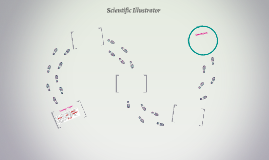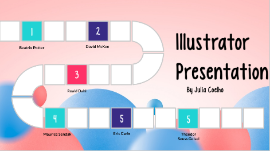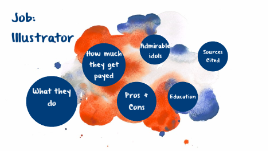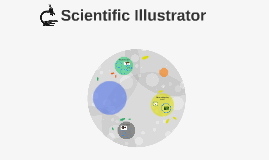Illustrator Presentation
Transcript: Presentation By Julia Coelho Illustrator Beatrix Potter First Illustrator 1 Beatrix Potter Helen Beatrix Potter, known as Beatrix, was born on 28 July 1866 to Rupert and Helen Potter in Kensington, London. Her younger brother Walter Bertram followed six years later. Both Beatrix and Bertram loved to draw and paint, and often made sketches of their many pets, including rabbits, mice, frogs, lizards, snakes and a bat. Beatrix was always encouraged to draw, and she spent many hours making intricate sketches of animals and plants, revealing an early fascination for the natural world that would continue throughout her life. Although she never went to school, Beatrix was an intelligent and industrious student, and her parents employed an art teacher, Miss Cameron, and a number of governesses, including Annie Moore, to whom she remained close throughout her life. https://www.peterrabbit.com/about-beatrix-potter/ Beatrix Potter Beatrice Potter's Pictures Potter's Pictures David McKee Second Illustrator 2 David McKee David Mc Kee David McKee grew up in Devon, England. Later, while a student at Plymouth Art College, he began selling his cartoon drawings to newspapers. Since 1964 he has published a number of successful books for children, including the King Rollo stories, which he helped animate for British television. His first book for Lothrop was Snow Woman, of which Publishers Weekly said, "It is McKee's superb humor--conveyed almost solely in the illustrations...that wins the day." Of his second Lothrop book, Who's a Clever Baby, Publishers Weekly had this to say: "Grandma's alliterative frenzies are fascinating and readers will find Baby's manipulative stubbornness vastly amusing." Mr. McKee enjoys traveling and doing books that "leave things unsaid." https://www.harpercollins.com/author/cr-107641/david-mckee/ David's Illustrations Roald Dahl Third Illustrator 3 Roald Dahl Dahl's Life Famously, Roald Dahl wrote many of his best-known children's stories, including Charlie and the Chocolate Factory and Matilda, in a Writing Hut in his garden. Born in Llandaff, Wales, on 13th September 1916 to Norwegian parents, Harald Dahl and Sofie Magdalene Hesselberg, Dahl was named after Roald Amundsen, the Norwegian who had been the first man to reach the South Pole just four years earlier. A heroic start in life. But his early years were blighted by the tragic deaths of his older sister, Astri, and his father. https://www.roalddahl.com/roald-dahl/about Roald Dahl Dahl's Charecters Maurice Sendak Fourth Illustrator 4 Maurice Sendak Maurice Sendak was born on June 10, 1928 in New York City. The now-renowned children's author studied at the Art Students League and illustrated more than 80 books by other writers before authoring one himself. His most critically acclaimed work includes the dark and beloved story Where the Wild Things Are. Later in his career Sendak collaborated with Carole King on the musical Really Rosie and has done other work for the stage. https://www.biography.com/people/maurice-sendak-9478893 Maurice Sendak Sendak's Biography Sendak's Monsters Eric Carle Fifth Illustrator 5 Eric Carle About Eric About Eric Born in Syracuse, New York, in 1929, Eric Carle moved with his parents to Germany when he was six years old; he was educated there, and graduated from the prestigious art school, the Akademie der bildenden Künste, in Stuttgart. But his dream was always to return to America, the land of his happiest childhood memories. So, in 1952, with a fine portfolio in hand and forty dollars in his pocket, he arrived in New York. Soon he found a job as a graphic designer in the promotion department of The New York Times. Later, he was the art director of an advertising agency for many years. http://www.eric-carle.com/bio.html Carle's Critters Theodor Seuss Geisel Sixth Illustrator 5 Theodor Seuss Geisel After illustrating a series of humour books, Geisel decided to write a children’s book, which was reportedly rejected by nearly 30 publishers. After his chance meeting with a friend who was an editor at Vanguard Press, And to Think That I Saw It on Mulberry Street was finally released in 1937. The work centres on a young boy who transforms his ordinary walk home from school into a fantastical story. Later, however, he describes only the facts of his walk to his father, who frowns on the boy’s imaginative nature. Geisel used the pen name Dr. Seuss, planning to publish novels under his surname; the Dr. was a tongue-in-cheek reference to his uncompleted doctorate degree. However, his first book for adults, The Seven Lady Godivas (1939), fared poorly, and thereafter he focused on children’s books, which he preferred. According to Geisel, “Adults are obsolete children, and the hell with them.” https://www.britannica.com/biography/Dr-Seuss Theodor Seuss Geisel Becoming Suess Suess' Illustrations

















